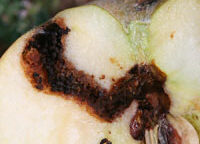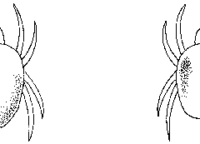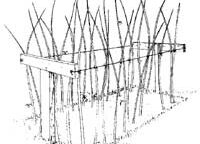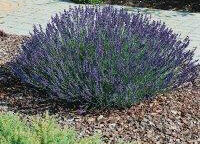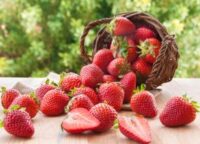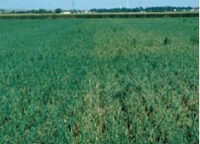- 07, 22, 2015
- No Comments.
- By
Codling Moth: Control in Home Plantings – 5.613
Print this fact sheet by W. Cranshaw and R. Hammon* (6/13) Quick Facts… The caterpillar of the codling moth is the common ‘worm’ in a wormy apple or pear. Most injury is usually produced by the second generation, which begins in early summer. Non-chemical controls that can reduce fruit damage include fruit thinning, prompt removal […]
Take a Tour- 07, 22, 2015
- No Comments.
- By
Western Corn Rootworm – 5.570
Print this fact sheet by F.B. Peairs and S.D. Pilcher* (9/13) Quick Facts… Western corn rootworm larvae feed on root hairs and small roots; larger rootworms feed on primary roots. Crop rotation is the most consistent and economical means of controlling western corn rootworm populations. Cultural practices that promote strong root systems and a vigorous […]
Take a Tour- 07, 22, 2015
- No Comments.
- By
Spider Mites in Corn – 5.555
Print this fact sheet by F.B. Peairs * (12/14) Quick Facts… Spider mite outbreaks are commonly due to hot, dry conditions, particularly in drought-stressed corn. Two common species of spider mites in Colorado are Banks grass mite (BGM) and two-spotted spider mite (TSM). Manage spider mite problems by preserving beneficial Insects and mites. Base treatment […]
Take a Tour- 07, 22, 2015
- No Comments.
- By admin
Grasshoppers in Field Crops – 5.535
Print this fact sheet by F.B. Peairs * (10/14) Quick Facts… Grasshoppers often appear first in weedy areas of roadsides, fence rows, irrigation ditches and other noncrop areas. After these food plants are gone, the insects leave in search of other food, often an irrigated crop or newly emerged winter wheat. Control grasshoppers in the […]
Take a Tour- 07, 14, 2015
- No Comments.
- By
Raspberries for the Home Garden – 7.001
Print this fact sheet by J. Reich, H. Hughes and J.E. Ells * (4/20) Quick Facts… Of all bramble fruits, only red and yellow raspberries are recommended for general cultivation in Colorado. There are now a few hardy varieties of black raspberries. Blackberries are considered marginal, due to inadequate hardiness, but some varieties can be […]
Take a Tour- 07, 14, 2015
- No Comments.
- By
The Preparation of Small Spray Quantities of Pesticides – 7.615
Print this fact sheet by H. Larsen, R. Hammon and C.E. Swift* (10/20) Reviewed by I. Shonle** Quick Facts… Pesticide labels often do not contain directions for mixing small quantities of spray. Accurate measurements of ingredients are important when mixing pesticides. The concentration of the active ingredient in the spray is critical to its effectiveness. […]
Take a Tour- 07, 13, 2015
- No Comments.
- By
Growing Lavender in Colorado – 7.245
Print this fact sheet by K. A. Kimbrough and C.E. Swift1 (10/09) Quick Facts… Hardy lavender varieties thrive in Colorado’s USDA Hardiness Zones 5 through 7. Lavender grows best in full sun and slightly alkaline soils, which makes it a perfect plant for Colorado. Lavender comes in a variety of colors including white, pink, blue, […]
Take a Tour- 07, 10, 2015
- No Comments.
- By
Strawberry Diseases – 2.931
Print this fact sheet by C.E. Swift *(2/21) Revised by S. Carter and Y. Henson Quick Facts… Winter damage and poor cultural management predispose strawberry plants to diseases. Red stele, black root rot, powdery mildew, botrytis fruit rot, leaf spot, and leaf scorch are the most important strawberry diseases in Colorado. Strawberry plants are most […]
Take a Tour- 07, 10, 2015
- No Comments.
- By
Xanthomonas Leaf Blight of Onion – 2.951
Print this fact sheet by H. Schwartz and D. H. Gent * (5/11) Quick Facts… Xanthomonas leaf blight is a common foliar, bacterial disease of onion. The disease favors moderate to warm temperatures, high moisture and plant wounds during and after bulbing. The pathogen can survive in infested debris and volunteer onions, and is seed-borne. […]
Take a Tour- 07, 06, 2015
- No Comments.
- By admin
Newsletter de Asuntos Familiares – Julio de 2015
PDF Version ¡Los alimentos frescos localmente producidos son deliciosos! By: Kaye Kasza, Agente te Ciencias para la Familia y el Consumidor, South East Area Extension Este es el mejor momento para obtener frutas y verduras “acabadas de cortar o cosechar” en su mercado de productores locales. Es una excelente manera de comprar frutas y verduras […]
Take a Tour
